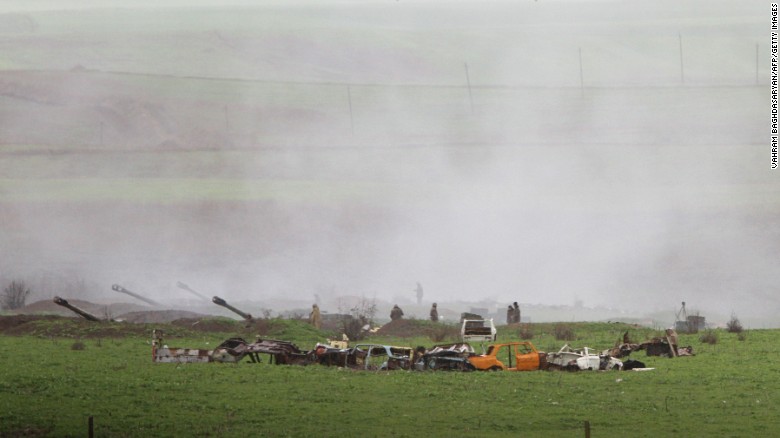Deep-seated animosity paves way for Armenia, Azerbaijan violence
On so little do the two countries concur. Not just now but historically as well.
Azerbaijan says Armenia instigated the latest conflict when it shelled civilian settlements and attacked Azerbaijani forces. Armenia paints a starkly different picture, saying that Azerbaijan provoked the fighting when an Mi-24 attack helicopter opened fire on Armenian military positions.
18 Armenian, 12 Azerbaijani troops killed
It's a long-running Eurasian conflict that has intermittently boiled and simmered for almost a century.
Here's how we arrived at this juncture:
Where is this unfolding?
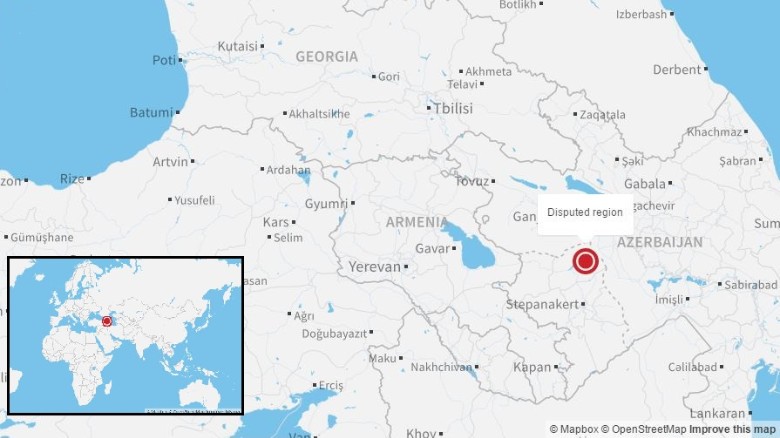
Armenia and Azerbaijan are former Soviet republics east of Turkey, north of Iran and south of Georgia and Russia. Armenia is in the South Caucasus region on the eastern edge of Europe. The southern region of the state intersects Azerbaijan's southwest border, leaving a portion of Azerbaijan, located to the southwest of Armenia, cut off from the Azeri mainland. Azerbaijan's eastern border is formed by the Caspian Sea.
The Nagorno-Karabakh region lies east of this segment of Southern Armenia, within Azerbaijan's borders. Though the administrative borders of the now-defunct Nagorno-Karabakh Autonomous Oblast covered a 1,700-square-mile region (an area slightly larger than Rhode Island), the government of the Nagorno-Karabakh Republic claims its seven regions cover 4,415 square miles (an area about 4/5 the size of Connecticut).
Republic? Oblast? Which is it?

Azerbaijani soldiers prepare for a battle in Gulabird in the southern part of Nagorno Karabakh in October 1992.
Well, it's disputed, wherein lies the conflict. It's not a republic, despite claiming its own government, and its status as an oblast ended in 1991.
It's internationally recognized as part of Azerbaijan, but the country's influence over the region is thin. Though as many as 40,000 Azerbaijanis lived there in the late 1980s, a 2005 census indicated that of the region's 138,000 residents, fewer than 400 were non-Armenians. The area now contains about 94,000 residents, the Nagorno-Karabakh Republic says.
Did the recent fighting erupt out of nowhere?
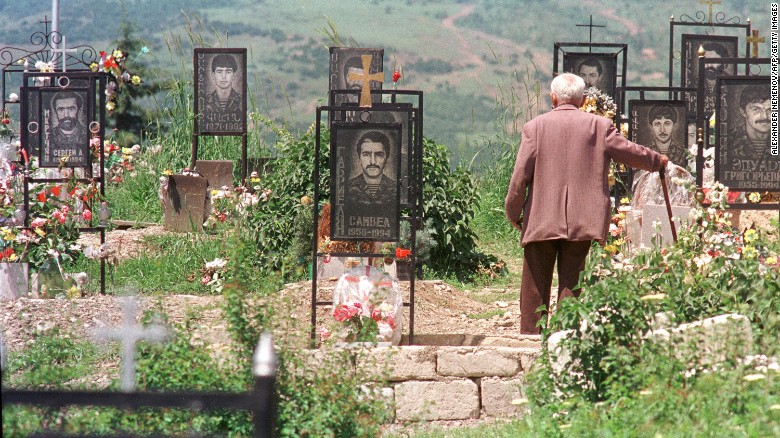
An Armenian man visits his son's grave at a memorial cemetery in Stepanakert, Azerbaijan, the capital of Nagorno Karabakh, in June 1994.
Not at all. The region has a long and bloody history going back to before Christ. But for the purposes of this discussion, let's begin with the fall of the Russian Empire in 1917.
The Azerbaijanis and Armenians unsurprisingly have differing versions of exactly what happened and why, but in a nutshell, the two countries declared their independence and went to war over disputed territories in 1918, the war ended in 1920 and the countries became part of the Soviet Union in 1922. The following year, the Nagorno-Karabakh Autonomous Oblast was formed inside the borders of the Azerbaijan Soviet Socialist Republic, putting the conflict on ice for several decades.
So things were quiet for almost a century?
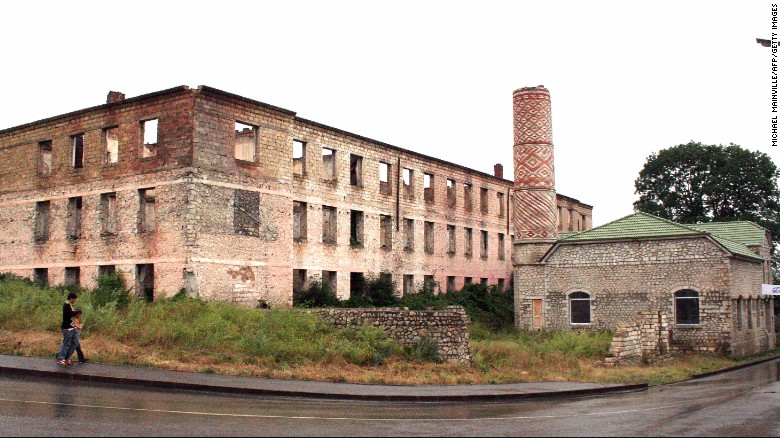
Residents pass the ruins of a building and a mosque in Shusha, Nagorny Karabakh, in July 2007.
Nope. There were protests here and there, but in 1988 -- following fighting that the largely Christian Armenians blamed on the predominantly Muslim Azerbaijanis, and vice versa -- Karabakh officials appealed to become part of the Armenian Soviet Socialist Republic.
Demonstrations turned into interethnic conflicts, which in 1991 escalated into war after officials in Karabakh declared the region independent and the Soviet Union later dissolved. A Russian-brokered ceasefire was reached in 1994, but by then the separatists, who are seeking full independence from Azerbaijan, had taken control of Nagorno-Karabakh and seven surrounding provinces.
Where do things stand now?
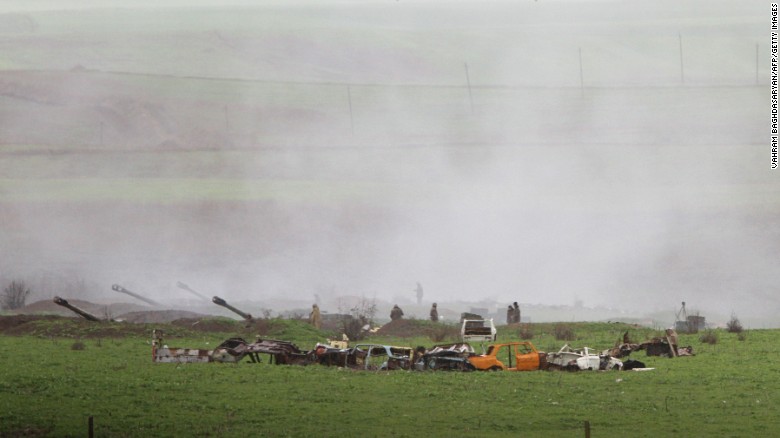
Armenian artillery units are seen in Martakert, Nagorno-Karabakh, on Sunday.
Tenuously. In 1994, the Organization for Security and Cooperation in Europe formed the Minsk Group, which is presently chaired by ambassadors from the Russian Federation, France and the United States.
The group has worked to broker a meaningful peace in the long-running conflict, but tensions have occasionally flared, prompting international bodies such as the Council of Europe, the Organization of the Islamic Conference and the U.N. General Assembly to decry Armenian actions in the region.
In April 2014, U.N. Secretary-General Ban Ki-moon, in response to reports of violence and casualties along the border, issued a statement urging both sides to "respect the ceasefire agreement, refrain from further violence and commit themselves to immediate de-escalation and continuing dialogue."
In September, responding to another fit of violence, Armenian President Serzh Sargsyan told the U.N. General Assembly, "Shall (Azerbaijan) continue such an aggressive policy, it will not leave Armenia any other choice but to take necessary legal and political-military steps to provide the Republic of Armenia and Nagorno-Karabakh Republic with the opportunity to develop in security and peace."
News Courtesy: www.newagebd.net

